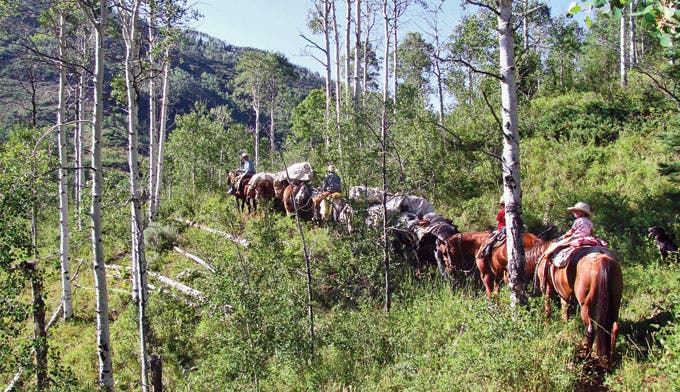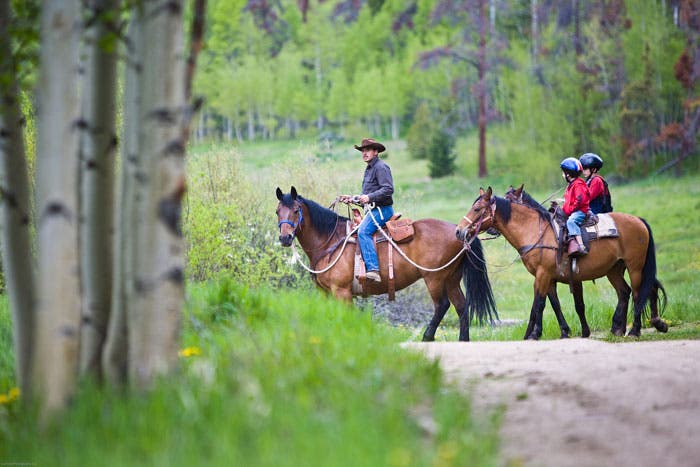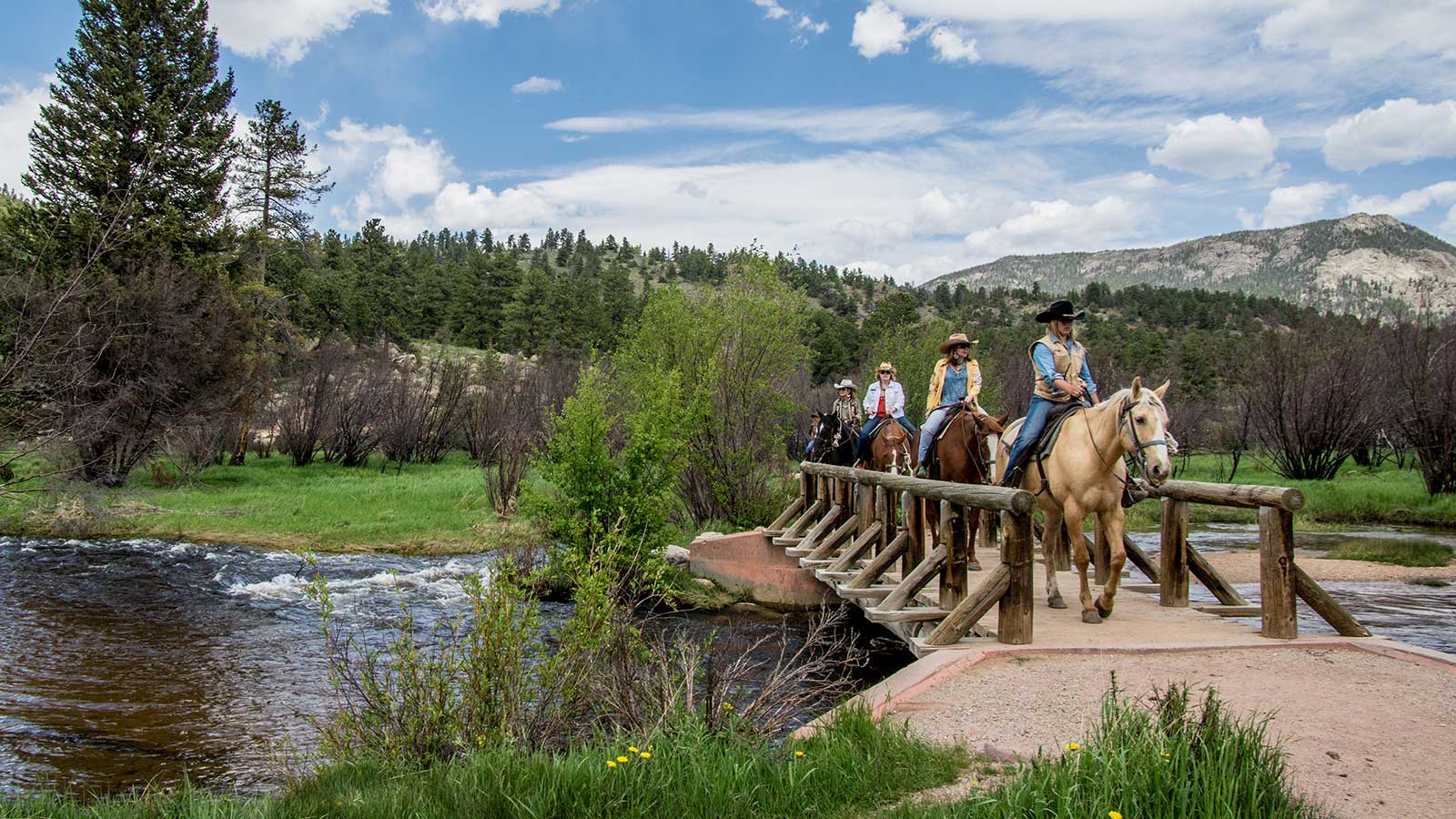Ride a Horse in Rocky Mountain National Park

'Courtesy Meeker'

Horses have always been a part of Rocky Mountain National Park. From the first explorers to Estes Park residents it was horses that enabled them to move around the park with the speed required. So why not continue the tradition and go for a ride yourself?
There are over 260 miles of trails, 13 stock designated backcountry campsites and two stables located with in the Park during summer months. Families of all ages can ride for just an hour or an entire day. Either way one thing is for sure: riding across an alpine meadow framed by 13,000-foots peaks is an experience not soon to be forgotten.
Guided Horseback Trail Rides
Most visitors choose to take a guided trip throughout the park. The service enables you to just show up and hop on ready to go. All the hard work–feeding, grooming, and shoveling-is done for you. There are several outfitters located throughout Estes Park and Grand Lake, and even two official outfitters during summer months near Glacier Basin Campground and Moraine Park, on Bear Creek Road. Popular choices are the stables at YMCA of the Rockies (ymcarockies.org) and Sombrero Ranches (sombrero.com).

Don’t know how to ride a horse? No sweat! The guides will help you get comfortable with your partner and teach you proper riding technique. Rides are done at a walking pace so don’t worry about having to hit a full gallop five minutes in. One thing to take into consideration before hopping on: make sure you’re wearing pants (preferably jeans) since your legs will scrape against the horse. Guides will usually provide some water but having a bottle with you isn’t a bad idea.
When riding, make sure to keep your eyes peeled for impressive overlooks and wildlife. One of the nicest things about riding a horse is that you don’t have to keep your eyes on the trail 100 percent of the time (that’s the horse’s job) so you can take in the surrounding scenery without the fear of falling down.
Finally, don’t forget to let your guide know they were great at the end of the trip. Sometimes that can include a tip or a pat on the back, but your guides are working hard and most every time love their job so please remember to say thank you.

Horses in Rocky’s Backcountry
If you are thinking about going out on your own, just remember that due to the sensitive nature of the Park’s ecosystem, cross country travel is not permitted, but several designated stock backcountry campsites offer prime opportunities for fly fisherman, equestrians and first-timers alike to experience the mountains by horseback.
On the Park’s West side, plan on staying at North Inlet, Tonahutu, Haynach, Ditch Camp or Hague Creek. The camps range from 1.6 miles to 7.2 miles from the trailhead, and offer access to several high alpine lakes, stunning vistas, and open meadows.
On the Park’s east side, Lost Meadow, Bighorn Mountain, Lawn Lake, Ute Meadow, Thunder Lake and Finch Lake are all open to stock. Finch Lake in particular is a fly fisherman’s dream, so if you want to cut down on being tired out before casting a line, plan on staying at this backcountry destination. And if you’re looking for a fly fishing guide to help you pack in just check out a few of the outfitters in Estes Park.
Permits are required for overnight outings, as is certified weed-free hay. For rules, trail ethics, and recommendations for where to ride your own stock, go to nps.gov/romo/planyourvisit/horses.htm.